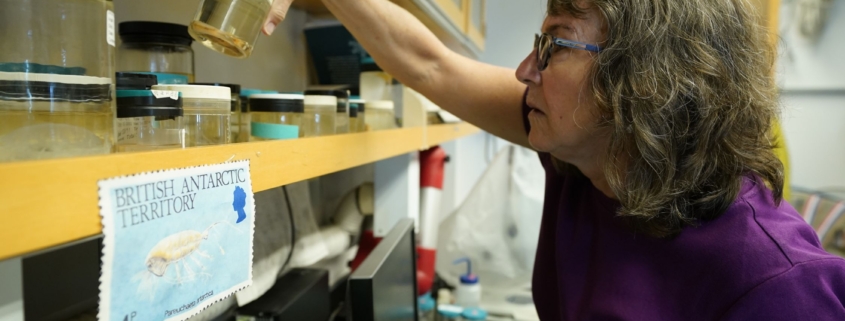Associated Press: Antarctic Krill Fishing
This month, PAL LTER scientists Deborah Steinberg, Logan Pallin, Ari Friedlaender, and Joe Cope were featured in a story by the Associated Press.
Factory fishing in Antarctica for krill targets the cornerstone of a fragile ecosystem
By Joshua Goodman and David Keyton, October 13, 2023
Here is a snippet…
Jars of krill line the windowsills in Deborah Steinberg’s lab, their pink hue faded but their shells intact. Collected on a U.S. icebreaker, they fuel her research at the Virginia Institute of Marine Science. On a recent visit, a technician unscrews one of the jars, empties the formaldehyde and rinses the krill under running water, a dozen fitting in the palm of his hand.
Tiny but bountiful, Antarctic krill make up one of the planet’s largest biomasses, nourishing everything from fish to marine mammals and seabirds.
“All those iconic images we associate with Antarctica of whales, seals and penguins — it’s a megafauna hotspot, and it’s because of krill,” Steinberg said.
Lesser known is krill’s important role fighting climate change.
…
Krill aren’t just a bulwark against climate change — they’re victims, too.
At Steinberg’s lab, researchers are examining how warming oceans — Antarctic krill need water colder than 4 degrees Celsius (39 Fahrenheit) to survive — are altering krill’s life cycle. It’s a task made more urgent by a record loss in sea ice this year.
Already, in the northernmost stretches of Antarctica where fishing activity is concentrated, populations have declined as krill migrate toward cooler waters closer to the South Pole, according to Steinberg. Other scientists say further research is required, questioning whether there’s evidence for a shift poleward and, if there is one, the cause of it.
“There are surprises all the time,” Steinberg said. “And the fact that we are still learning about the effects of ocean warming on the population means we need to be very, very cautious.”
Find the full article and related video on the Associated Press site.

 AP Photo/Patrick Semansky
AP Photo/Patrick Semansky
 This site was developed with the support of the National Science Foundation under Grant No. OPP-2224611 and OPP-2026045. Any opinions, findings, and conclusions or recommendations expressed in this material are those of the authors and do not necessarily reflect the views of the National Science Foundation.
This site was developed with the support of the National Science Foundation under Grant No. OPP-2224611 and OPP-2026045. Any opinions, findings, and conclusions or recommendations expressed in this material are those of the authors and do not necessarily reflect the views of the National Science Foundation.
